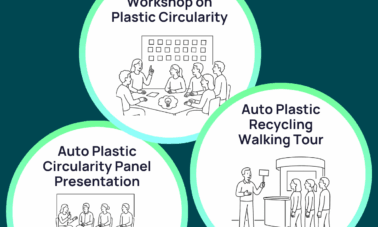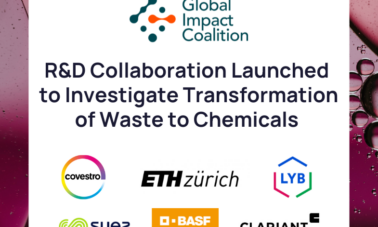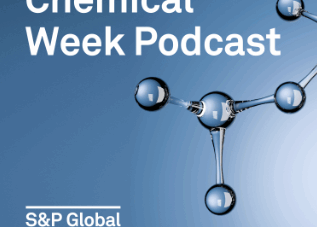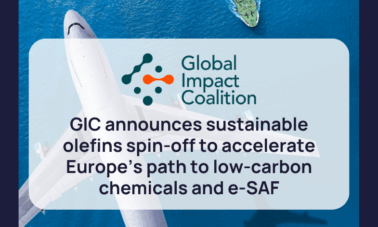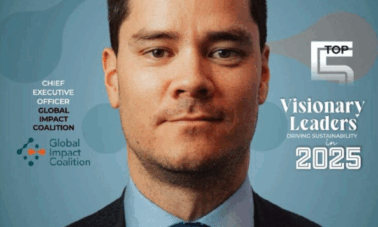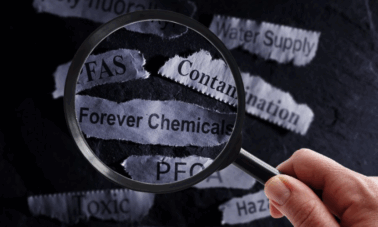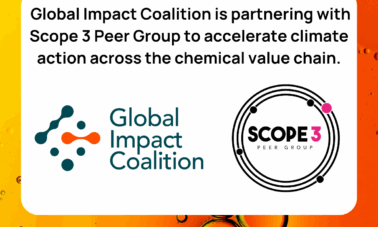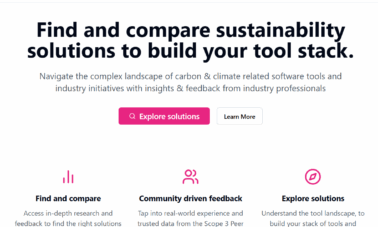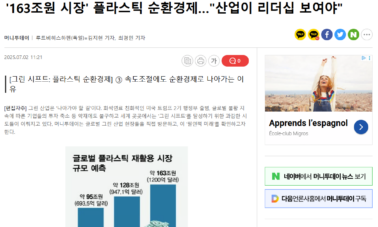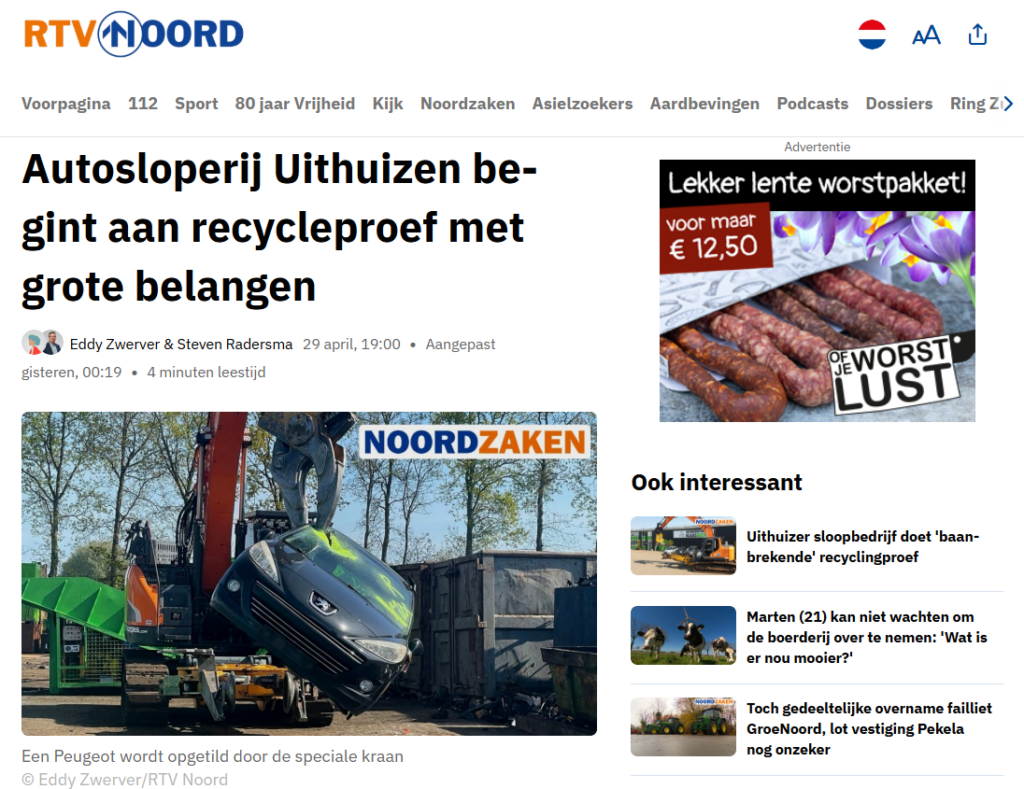
(translated version)
Car Dismantler in Uithuizen Starts High Stakes Recycling Pilot
Krrraak!! With a loud crash, the grabber slams down onto the black Peugeot. Glass shards fly in all directions. Bit by bit, the car is torn apart. It seems like just another day at Autodemontage Klaas Boer in Uithuizen. In reality, this is a pilot with high stakes.
Those stakes involve the search for the holy grail of car dismantling: economically viable separation of plastics so they can be reused. It sounds simple, but appearances are deceiving.
Director Jeroen Boer recently expressed his astonishment to RTV Noord that bumpers, mirror covers, and other plastic parts from scrapped cars mostly end up in the incinerator. Why not recycle them—just like the metal parts?
A trial should show whether this is economically feasible. This week and next week, the plastic parts of a hundred cars will be sorted separately at the scrapyard on the Edama industrial estate in Uithuizen. ‘It’s about a cross-section of what drives on the roads in the Netherlands,’ explains Boer.
This is done with a crane that is equipped with a special grab jaw. ‘It comes from Scotland’, says Boer. ‘I think we are one of the three junkyards in the Netherlands that have such a grab.’
Bam!! The crane operator puts the wreck back on the ground with a loud bang. The Peugeot has now been changed into a convertible. There you go, there the grabber has already grabbed the first chair seat. Bumpers, rear lights: one by one, the operator throws the parts into large green big bags. Labels indicate in English what should go in which bag.
‘No worries’, says Boer. ‘The driver has a legend in Dutch in his cab. He knows what he has to do.’ It shows: the swivel arm with the grab goes from left to right and back again. Plastic to the big bags, metal to large containers. A precision job.
The experiment is being followed with great interest by representatives of eight international companies, including Mitsubishi Chemical Group and BASF. They are affiliated with the Global Impact Coalition (GIC). By joining forces, they hope to contribute to reducing the waste stream in the automotive industry.
At the start of the trial on Monday, the representatives were fully present, says GIC spokesperson Amanda Martin. ‘This morning they are meeting in Groningen. They will come back this afternoon, when you are gone.’ It explains why the labels on the big bags are in English.
Martin has come over for the occasion from Geneva, Switzerland, where the GIC has its office. She assists a Dutch camera crew in making a promotional film about the test. ‘It’s important to get support for the experiment,’ explains Martin.
It is certainly not just an experiment for show, she emphasizes when asked. ‘You can keep talking about the environment. But it comes down to doing, otherwise nothing will happen.’
How difficult is it to set up such an experiment? More than you might expect beforehand. Martin: ‘A lot of meetings were held before we got to that point.’ As an example, she shows a list of parts, all of which are made of different types of plastic and therefore have to be processed in different ways.
In any case, it is a gain that the manufacturers want to work together. Until now, ‘metal’ and ‘plastic’ were strangers to each other, says Martin: ‘Finally they talk to each other’.
The trial in Uithuizen is only a first step. The filled big bags will be taken by road to two companies in Germany. The parts are further processed there. If all goes well, it will become clear in six months whether the trial has been successful.
From waste to raw material: potentially billions of euros are involved worldwide. Big business, in other words. Although he is not interested in money at this stage, Jeroen Boer hopes to get a piece of the pie in the future. ‘I now get twelve cents for a kilo of scrap. For a kilo of reusable plastic, I can get maybe thirty cents or more.’

